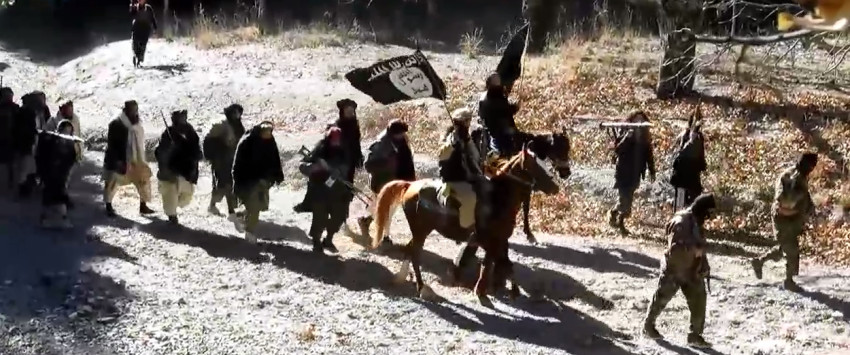The Afghan National Army (ANA) 215th Corps claimed that its forces killed 10 insurgents in Afghanistan’s southern Helmand province during an operation on Sunday. Among the dead was an Islamic State commander named Hafiz Wahidi, the alleged replacement for Mullah Abdul Rauf Khadim, the jihadist group’s former deputy governor for ‘Khorasan province.’ Khadim was killed on Feb. 9 in a US airstrike.
Afghan Ministry of Defense spokesman General Zahir Azimi issued a tweet in Dari on March 15 confirming the operation that killed Wahidi. Little is known about Wahidi or when he had been chosen to replace Khadim. A statement released by the Ministry of Defense claimed that he was the nephew of Mullah Khadim, according to Khaama Press.
If confirmed, Wahidi’s death will mark the second high level Islamic State in ‘Khorasan province’ commander to be killed in Afghanistan this year.
Khadim, who was appointed the deputy governor of Khorasan province in January, was previously a senior leader in the Taliban and was a former detainee at Gunatanamo Bay. The US military confirmed that it killed Khadim in an airstrike in the Kajaki district in Helmand. [See LWJ report, US military confirms it killed Islamic State, Shabaab leaders in airstrikes]
Khadim was captured by US forces in December 2001, held by the US military at Guantanamo Bay up until he was transferred to Afghan custody in December 2007, and subsequently freed by the Afghan government in 2009. After his release, he was quickly appointed to a senior position within the Taliban. In 2010, he served as the Taliban’s shadow governor for Uruzgan province and is also reported to have been a member of the Taliban’s Quetta Shura Council. [See LWJ report, Former Gitmo detainee turned Taliban leader threatens Afghan elders.]
Khadim was one of Mullah Omar’s top deputies and military commanders before he severed ties with the Taliban last year after losing an internal power struggle. On Jan. 26, the spokesman for the Islamic State said Khadim swore allegiance to emir Abu Bakr al Baghdadi, and was appointed the deputy governor of the Khorasan province. The Khorasan is a geographical region that covers Afghanistan, Pakistan and parts of neighboring countries. [See LWJ report, Islamic State appoints leaders of ‘Khorasan province,’ issues veiled threat to Afghan Taliban.]
The Islamic State declared its expansion into “Khorasan province’ in late January and appointed former Movement of the Taliban in Pakistan (Tehrik-e Taliban Pakistan or TTP) commander Hafez Saeed Khan as the “governor” of Khorasan province. Khan had previously served as the Movement of the Taliban in Pakistan’s emir for the tribal agency of Arakzai. Four other senior disaffected commanders from the Movement of the Taliban in Pakistan joined the Islamic State along with Khan.
The Islamic State is reported to be operating in the Afghan provinces of Helmand, Farah, Ghazni, Zabul, Paktika, Logar, Nangarhar, Sar-i-Pul, Jawzjan, and Kunduz. However, all of these reports cannot be confirmed. The Islamic State’s presence in Afghanistan and Pakistan is dwarfed by established jihadist groups such as the Afghan Taliban and the Movement of the Taliban in Pakistan. [See LWJ report, Mapping the emergence of the Islamic State in Afghanistan.]








